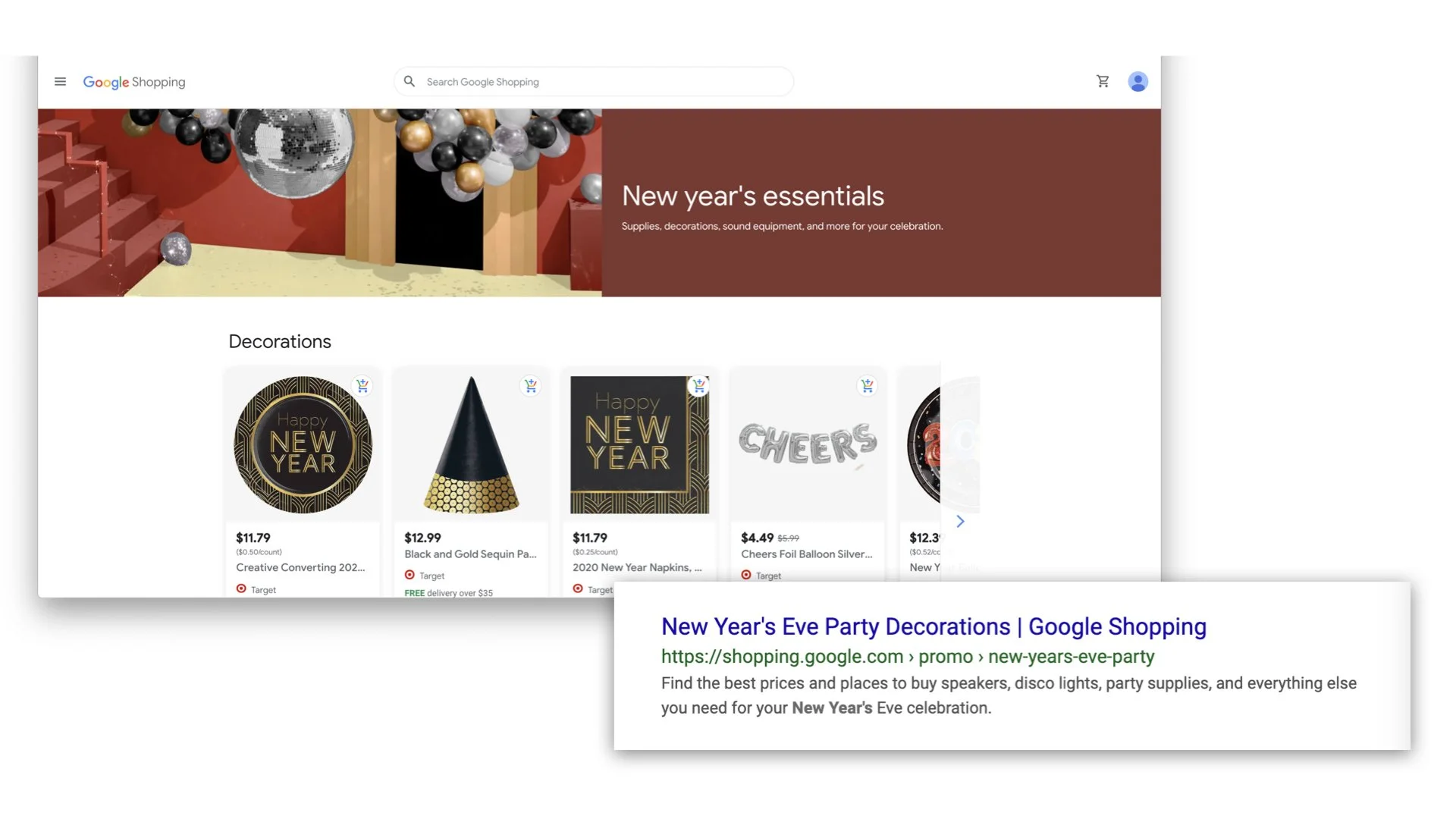Google Shopping: SEO Optimization and UX Writing
Background
Google is the world’s de facto search engine, running approximately 8.5 billion searches per day. Companies spend an untold amount of time and money trying their best to appear at the top of the search results page. There’s even old joke in the SEO world: Where’s the best place to hide a body so that no one will find it? Page 3 of Google’s search results.
The problem: Google Shopping’s merchandising campaign pages were not ranking well in Google search results.
Google Shopping launched seasonal retail campaigns throughout the year, and its ability to partner with retailers to feature products for these campaigns depended on its ability to drive traffic to these campaign pages.
The product team launched an initiative focused on optimizing the Google Shopping product for search engines.
The goals:
Improve organic search results for Google Shopping’s merchandising campaign pages.
Build internal support for funding this organic SEO work.
My role
UX writing | SEO | content strategy
Developed content guidelines to optimize on-page and metadata content for search engines.
Conducted keyword research and created SEO strategy for merchandising campaigns.
Wrote metadata content for all Google Shopping campaign pages.
Developed educational presentations about the importance of SEO for organic search results.
Conducted secondary research to inform campaigns’ content strategy and merchandising strategy.
Approach
This project went through several iterations, and I had to be able to roll with the punches as its scope rapidly changed. A month into my contract, the team shelved an idea to enrich the campaign pages with helpful editorial content. The creation of this content was what I was originally hired to manage, so I quickly pivoted to helping the UX and merchandising teams with the SEO strategy and implementation for metadata and on-page content.
I started by developing content guidelines for all content. I not only provided best practices for page titles and descriptions, H1 headers, and image alt tags, but I also created prescriptive style guide entries for each field.
I partnered with another UX writer to create the content for each campaign page. She wrote the on-page content, using my guidelines to ensure copy was optimized for organic search, while I wrote the metadata. In addition, I conducted the keyword research that would inform which search terms we would target for each campaign. This keyword research was also used by the merchandising team to determine which products and categories to feature in each campaign.
While the SEO program still was being funded, albeit with a different scope, not everyone in leadership saw the value in it. So I split my time between SEO content work and educating internal stakeholders on the importance of organic SEO for Google Shopping content.
I created educational decks that explained SEO in plain terms and connected it to the work we were doing to improve Google Shopping. A big challenge in the project was that I could only use publicly available information from Google about search engine optimization. Google is famously secretive about how its search algorithms work, and we were prohibited from knowing any proprietary information (to prevent us from “gaming” the system). This prohibition meant that I had to collate information from several different sources — information that was often more general than specific — and turn it into actionable guidance.
Learnings
By the end of the program, I had created two separate educational presentations — an overview of how on-page content impacts organic search results and a breakdown of how each element of Google Shopping’s webpages affects its search engine rankings.
I say “by the end of the program” because this isn’t one of those case studies in which there was a great outcome. Google Shopping leadership ultimately decided that Google having a program to improve the search engine rankings of its own pages looked like a conflict of interest, so they ended it.
I continued optimizing Google Shopping’s campaign pages, even though there wasn’t a formal program supporting it. In total, I worked on more than two dozen campaigns, creating the SEO strategy to optimize the pages as well as the content strategy that would be used by the UX and merchandising teams to program the pages.
A page from my research readout on the 2020 holiday shopping season.
Key takeaways
Good SEO = Good UX
The reason I kept focusing my work on SEO is because a lot of the principles of good SEO are also principles of good UX.
Writing clear, concise content helps both users and search engine web crawlers more easily understand what a page is about.
Robust metadata increases the accessibility of the page (for users with screen readers) and helps web crawlers understand non-text page content.
Structuring on page content to be more easily scanned (section headers, bulleted lists, etc.) helps users find the most valuable information and helps web crawlers prioritize on-page content.
User research isn’t the only type of research
Google Shopping didn’t have dedicated research support, so I used my skills as a former journalist to dig through all of the secondary research I could to help inform our work. I did competitive analysis on other retailers like Amazon and Target, I pulled insights from retail trade group research, and — especially once the Covid-19 pandemic hit — tracked daily news stories for economic and retail developments that would affect our business. We may not have been able to interview users, but there was plenty we knew about them, our competitors, and our industry.
Above and below: Slides from a presentation educating stakeholders about SEO principles.
A Google Shopping campaign page along with its search metadata.



